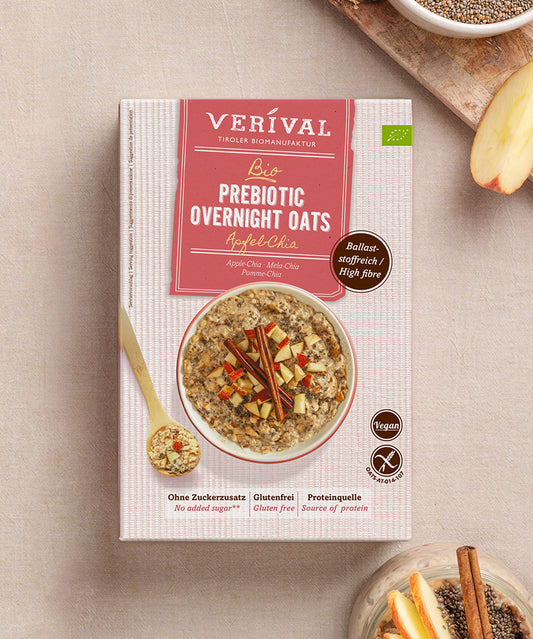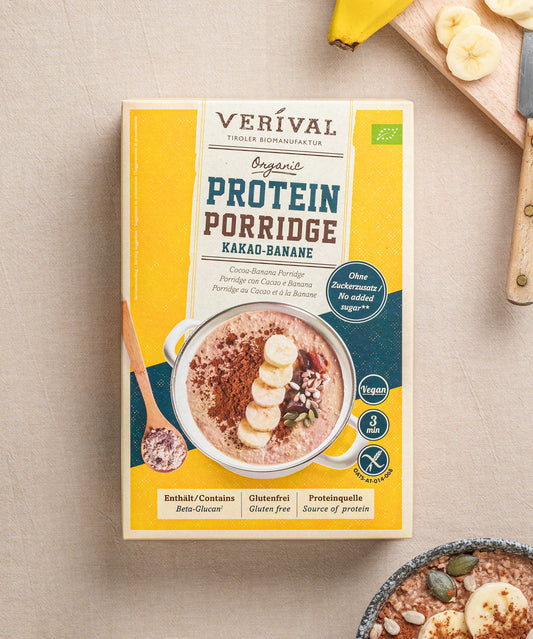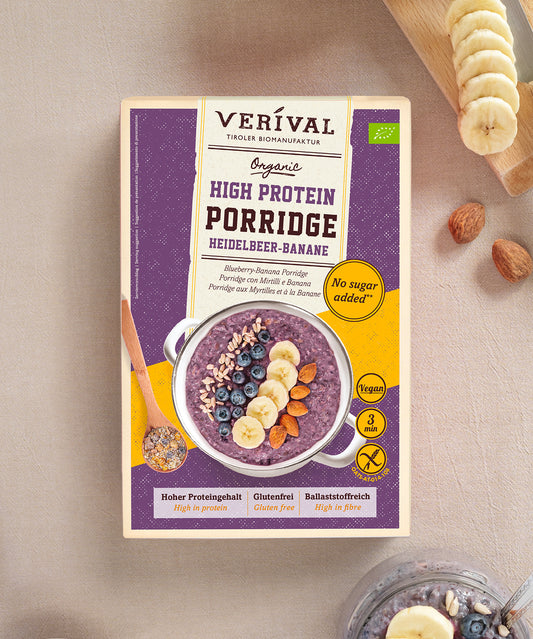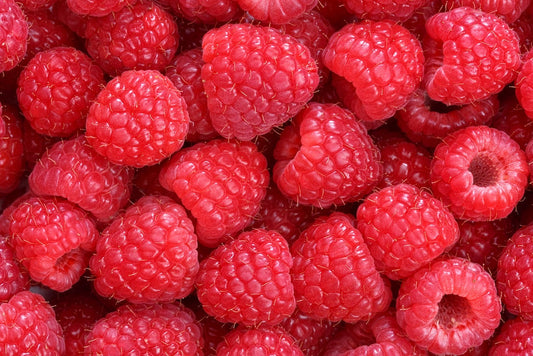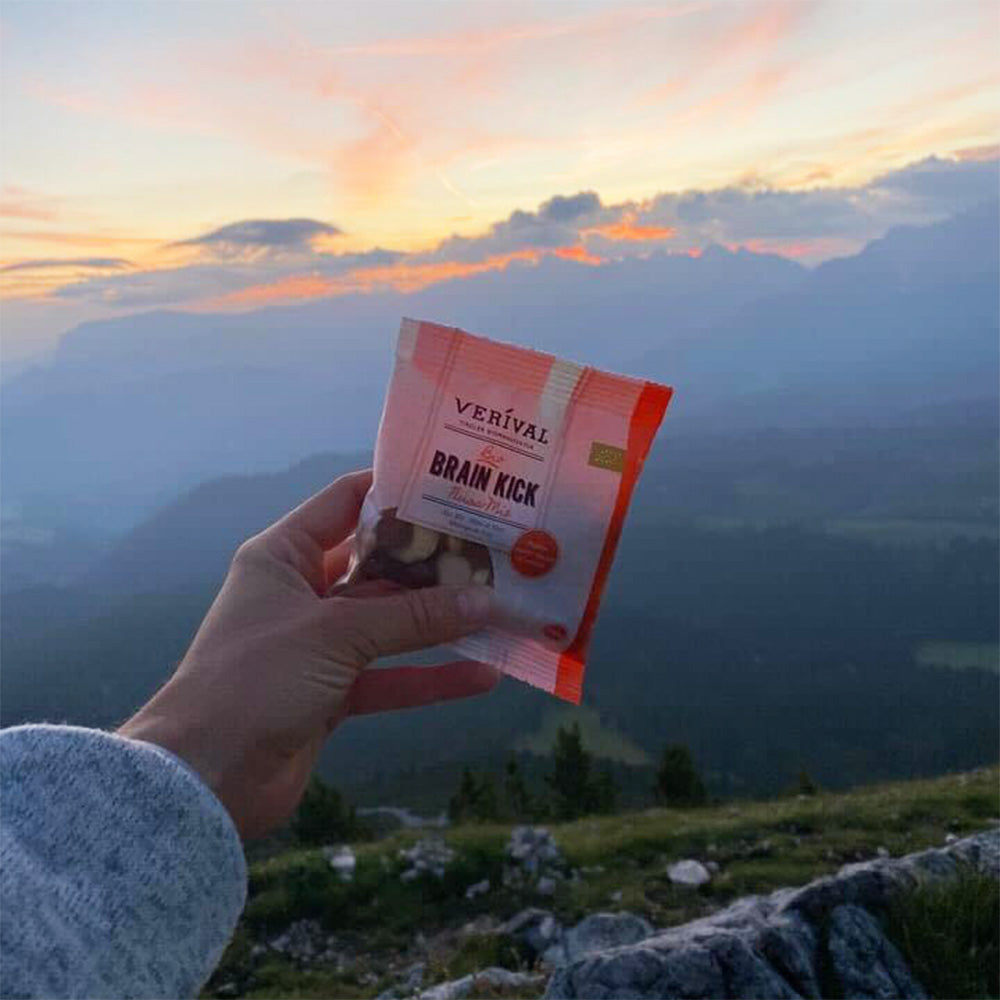Porridge is an absolute breakfast classic that has become indispensable. It goes well with almost any diet because the base is very simple and you can adapt the porridge to your respective diet. But is porridge also suitable for people who want to or need to reduce gluten in their diet?
In this article, we will tell you whether porridge is gluten-free and how you can tell whether your porridge is gluten-free. We will also briefly discuss why it makes sense to occasionally have gluten-free breakfast, even if you can tolerate gluten in principle.
What is gluten?
If you are not yet sure what gluten is, we will summarize the most important information for you here: Gluten, also known as a protein, is a storage protein found in many types of grain, such as wheat, barley and rye.
Thanks to its binding and stabilizing properties, this protein is popular in the food industry as an additive that gives products a desirable consistency.
Gluten is not bad per se, but more and more people are reducing their consumption of products containing gluten. In particular, there has been a trend in recent years to replace gluten-containing foods with gluten-free alternatives. But what exactly is gluten and does it make sense to eat a gluten-free diet?
Gluten intolerance – trend or real danger?
The percentage of the population with gluten intolerance is relatively low. In Germany, less than one percent of the population is affected. However, those who are affected must take particular care, since even small amounts can cause serious problems. If you suspect an intolerance, you should always consult an expert.
Do I have a food allergy? Find out more about the symptoms here
The majority of people tolerate gluten-containing foods without any problems. However, it is still recommended to cut down on gluten a little, as it is found almost everywhere, especially in processed foods. If you want to eat as varied a diet as possible, it is definitely advisable to occasionally reach for gluten-free products to supply your body with other nutrients.
However, it should be emphasized that an increasing number of people are reporting gluten sensitivity (actually wheat sensitivity), in which those affected do not experience any serious problems, but do notice minor symptoms. These can range from a foggy feeling to mild abdominal pain.
However, it is rarely an actual intolerance, which is why completely avoiding it is neither necessary nor sensible. So here too, a varied diet is the best approach.
Recipe ideas for a gluten-free breakfast – an overview
Where can gluten be found?
As we have now heard, it makes perfect sense to occasionally resort to gluten-free products. However, the question arises as to which foods gluten is contained in at all.
In principle, gluten is contained in all products that are based on cereal products such as wheat, rye or spelt. Thus, the list ranges from muesli and bread to desserts such as cakes. This gluten is even contained in ice cream, sausage and various ready meals.
How can I recognize products containing gluten?
Gluten-free products are usually declared as such – except for foods that are naturally gluten-free. They are usually clearly recognizable as such on the packaging as a symbol (seal) or in writing.
Products that are gluten-free in principle but may have come into contact with products containing gluten during the manufacturing process often state that traces may be present. However, this is only a safeguard on the part of the manufacturer and is normally safe even for people with celiac disease (gluten intolerance). However, if you don't want to risk anything, it's better to stay away from it, even if the risk is very low.
If a product contains gluten-containing ingredients, this is indicated by a label on the back of the package. In most cases, the respective gluten-containing ingredients are printed in bold.
This makes it easy for anyone to see whether the product contains gluten or not. Based on this, you can now analyze the products and occasionally replace gluten-containing products with alternatives if you wish.
Is porridge gluten-free?
But what do these findings mean for the breakfast classic porridge? The main ingredient of porridge is usually oats in the form of oat flakes or oat groats. The other ingredients vary depending on the porridge, but these are usually gluten-free ingredients such as dried fruits, salt or sweeteners.
Oats are naturally low in gluten. However, it is possible that the oats can often become contaminated during the harvesting and manufacturing process. This means that the oats come into contact with other gluten-containing foods during the process and thus have a higher gluten content.
When oats are declared “gluten-free”, care is taken at every stage of production, starting with cultivation, where it must be ensured that no other grain grows in the field, through to harvesting, storage and processing into the finished product, to ensure that the oats do not come into contact with gluten-containing grain. This requires elaborate cleaning processes for the machines used in the harvesting and processing. This is ensured by strict guidelines and ensures that this oats is completely gluten-free and can therefore be enjoyed by people with coeliac disease. Gluten-free products are clearly marked with the symbol of the crossed-out ear of wheat.
Conclusion
Porridge is therefore not automatically completely gluten-free, as the oats it contains may have been “contaminated” with products containing gluten. If you want to be sure, you should therefore make sure that the product in question is gluten-free.
This is usually clearly indicated on the packaging, either as a symbol or in writing. In addition, you can filter by gluten-free products in our Verival shop. This shows you all the available products at a glance, so you don't need to spend any more time looking into the subject.






